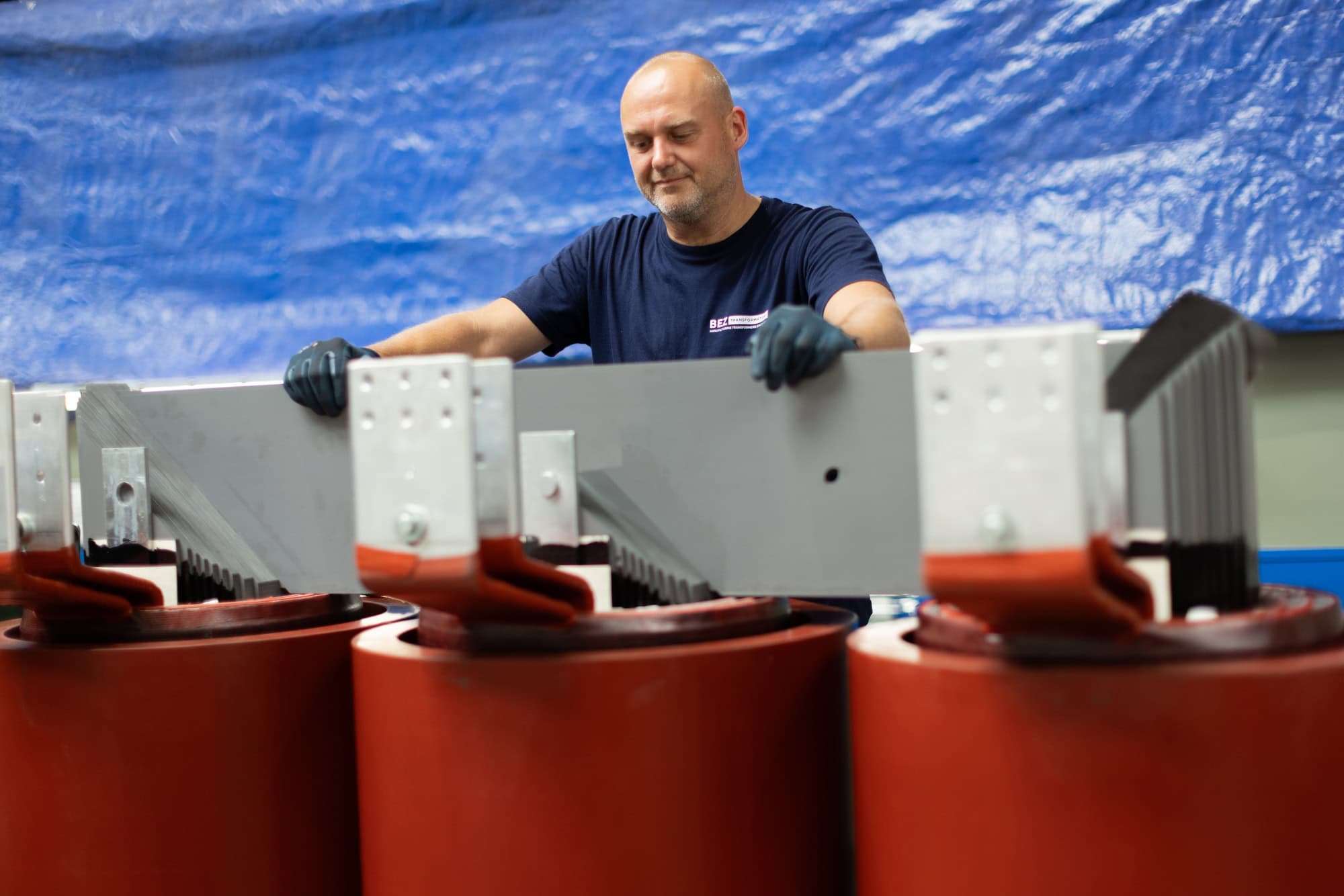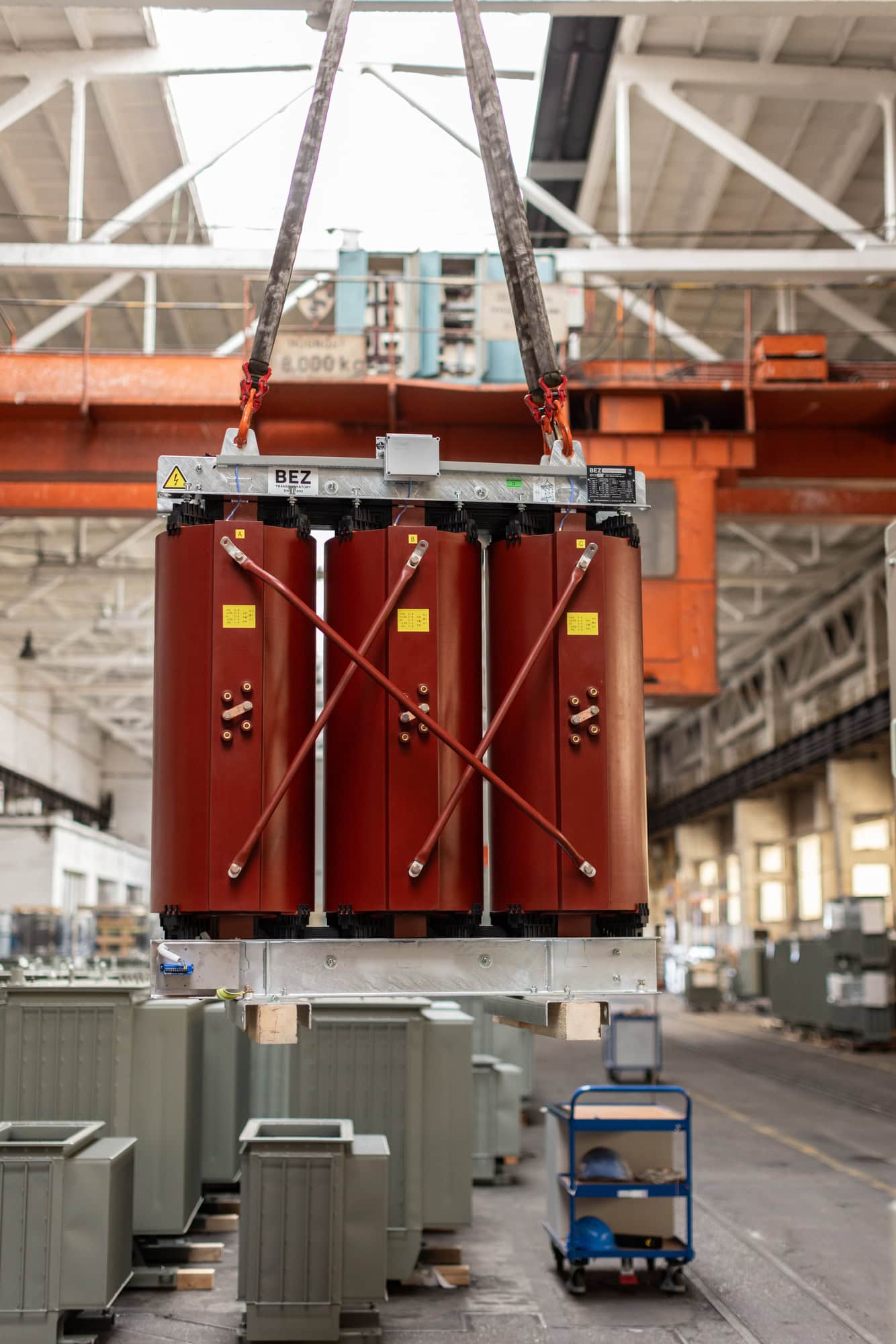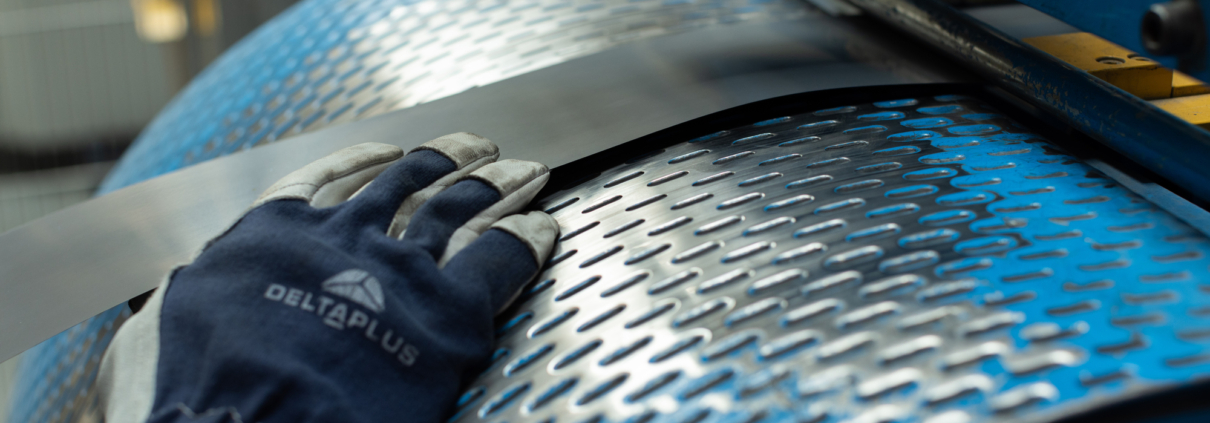Transformer design: from concept to implementation
At BEZ TRANSFORMÁTORY, we focus on developing and manufacturing transformers that meet high demands not only for performance and reliability, but also for energy efficiency, safety and long-term sustainability. A well-designed prototype is always the result of a complex process. The design of transformers is therefore by no means random. It combines computational precision, knowledge of materials and practical experience from real operation.
Basic design principles of transformers
It is a multi-stage process in which technical parameters are linked to the practical requirements of a particular operation. Each stage, of course, has its own significance.
- The first step is the precise specification of technical and operational parameters. The aim is to specify the exact requirements that the transformer must meet. Specifically, its power, input and output voltages, rated frequency, type of operation, installation conditions, cooling requirements and other client specifications.
- The shape and material of the core has a major influence on the dimensions, weight and efficiency of the device . The choice of material and sheet thickness also affects core losses. Thus, the correct choice of core ensures not only high plant efficiency but also mechanical stability, good cooling and lower noise.
- The transformer windings are designed with emphasis on current load, heat loss and electrical strength. The design of transformers varies by number of turns, conductor cross-section, conductor material, winding geometry and insulation type.
- The stability of the device during operation, but also during transport, is ensured by the mechanical part of the design. This includes the assembly concept, the dimensioning of the structural elements, protection against vibrations and shocks, as well as compliance with the insulation properties.
- Each proposal will undergo a thorough loss analysis. Losses affect not only efficiency but also operating costs.
The goal of design optimization is to find a balance between size, performance, efficiency and production cost.

Dimensions, shape and power characteristics of transformers
They result from the specific technical requirements and the environment for which the transformer is intended. These factors also fundamentally influence the choice of construction materials, the loss rate and the cooling method.
- The basic parameter is the rated power of the transformer. As the power increases, the dimensions of the core and the cross section of the windings also increase. Higher power means higher currents, which in turn require more robust conductors, better cooling and reinforcement of the insulation system.
- The frequency of the power system has a significant impact on the core design . In conventional power applications, transformers are designed for a standard frequency of 50 Hz. Higher frequencies are used with smaller cores, resulting in reduced weight and size. Lower frequency, on the other hand, requires an increase in core cross section, making the transformer larger and more expensive.
- The choice of cooling has a direct influence on the winding layout, the construction material used, but also the overall volume of the device.
- Dry-type transformers usually require a larger volume just for natural heat dissipation with higher insulation distances.
- Oil-immersed transformers often have a more compact design due to efficient heat dissipation and higher thermal conductivity of the environment.
- Practical constraints must also be taken into account in the design. The availability of materials, the production technology used or the method of transport also influence the production possibilities and the final price of the equipment.
It is also important to comply with weight limits for handling and transport during manufacture, which is also part of the design of transformers.

Transformer design testing
In the company BEZ TRANSFORMÁTORY we emphasize systematic inspection from common series transformers to specifically designed units. Once the design process is complete and a prototype is constructed, we thoroughly test the equipment. The aim is to verify that it meets all technical parameters and standards, that it behaves stably in real-life conditions and that the design matches the assumptions of the calculation model.
Prototype testing is crucial not only for safety but also for confirming the optimization of the design. It can reduce potential manufacturing deviations, improve the design for series production and ensure long-term reliability.
Production, documentation and final inspection
After successful validation of the design and testing of the prototype, the production phase follows. Based on the final design, complete production documentation is prepared. For projects with specific requirements, an individual production plan is also drawn up. Once production is complete, final assembly of the transformer follows. Each transformer then undergoes a final output test in which all electrical and mechanical parameters are verified. Only after successful completion is the equipment ready to be handed over to the customer.

